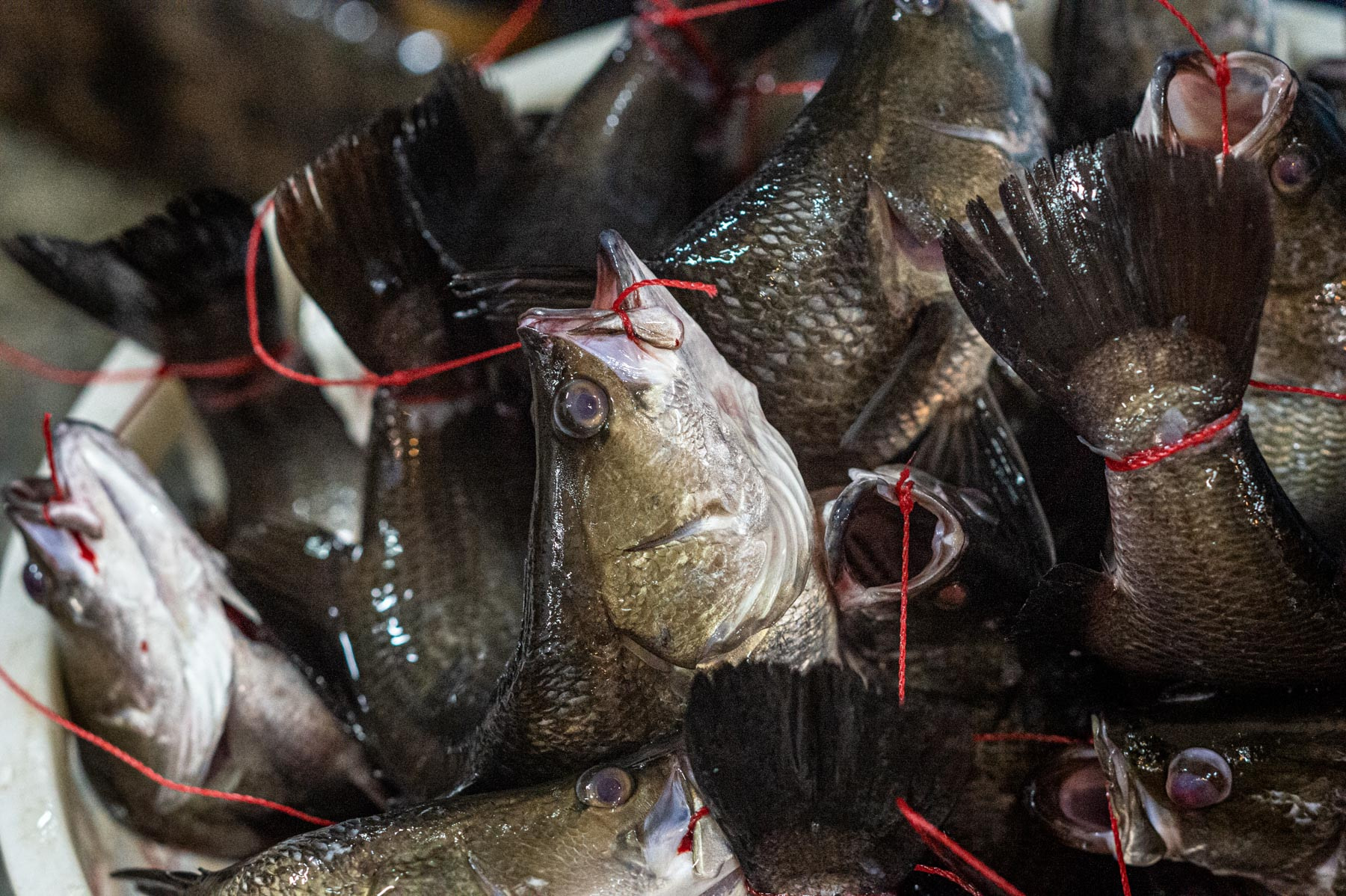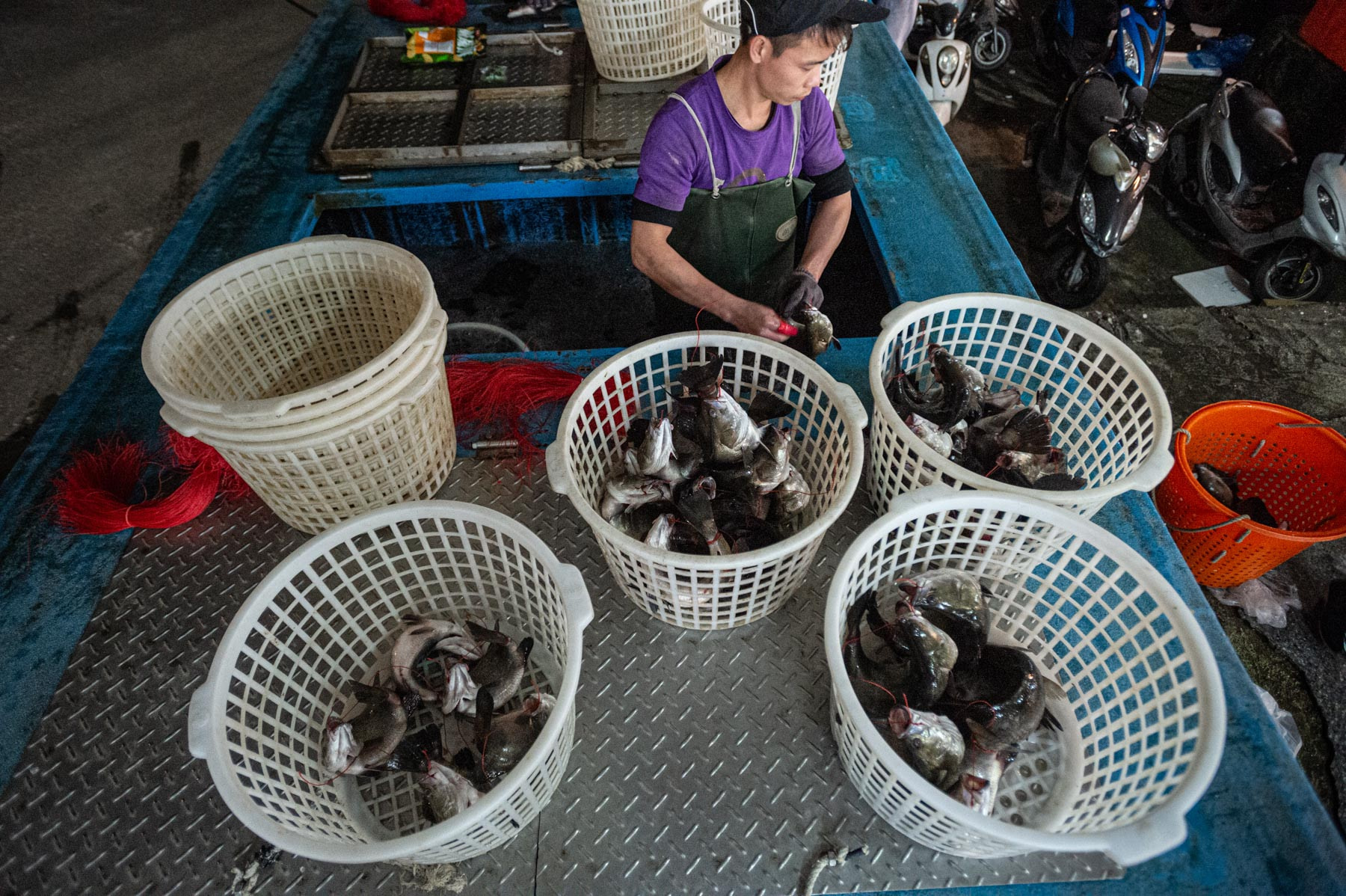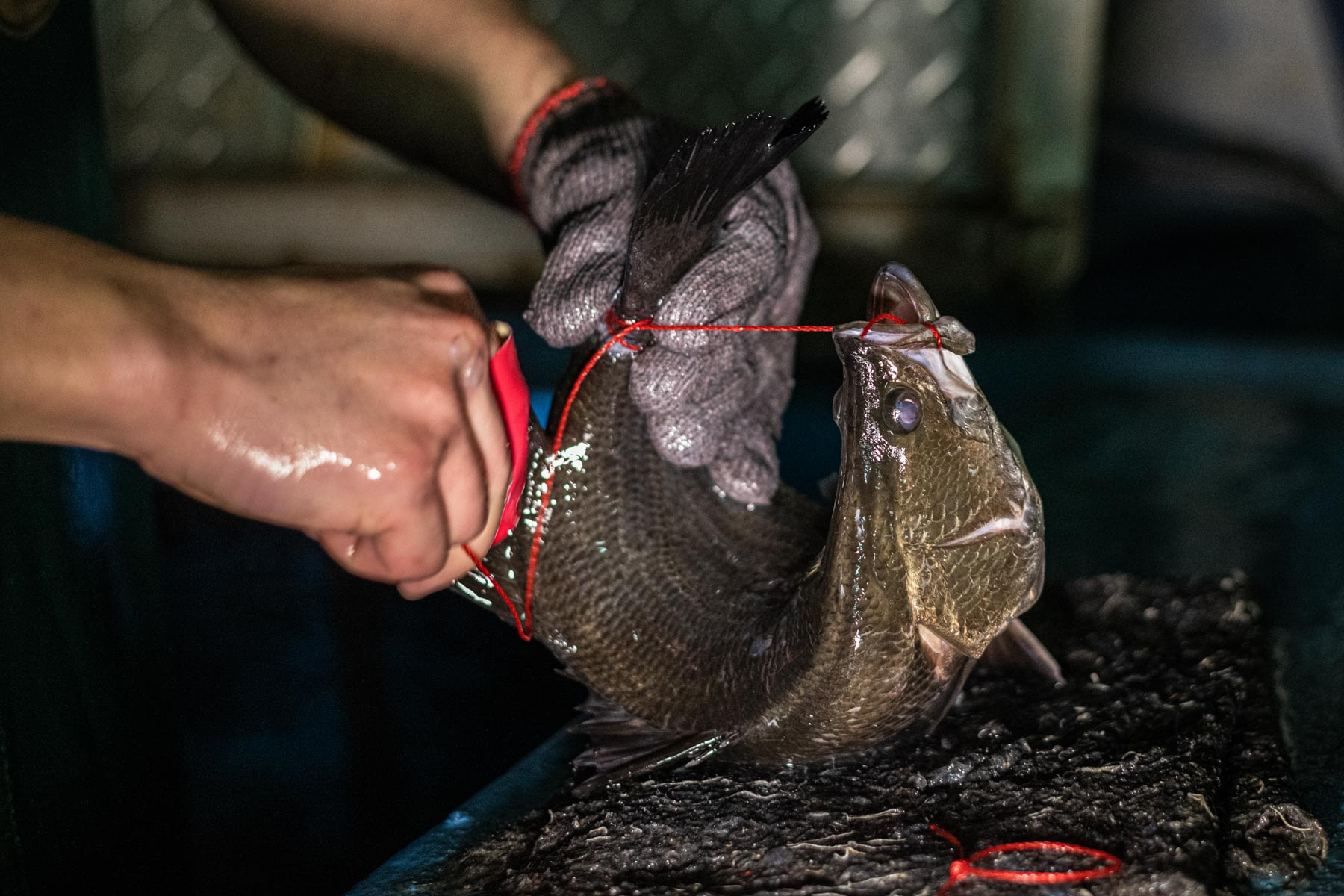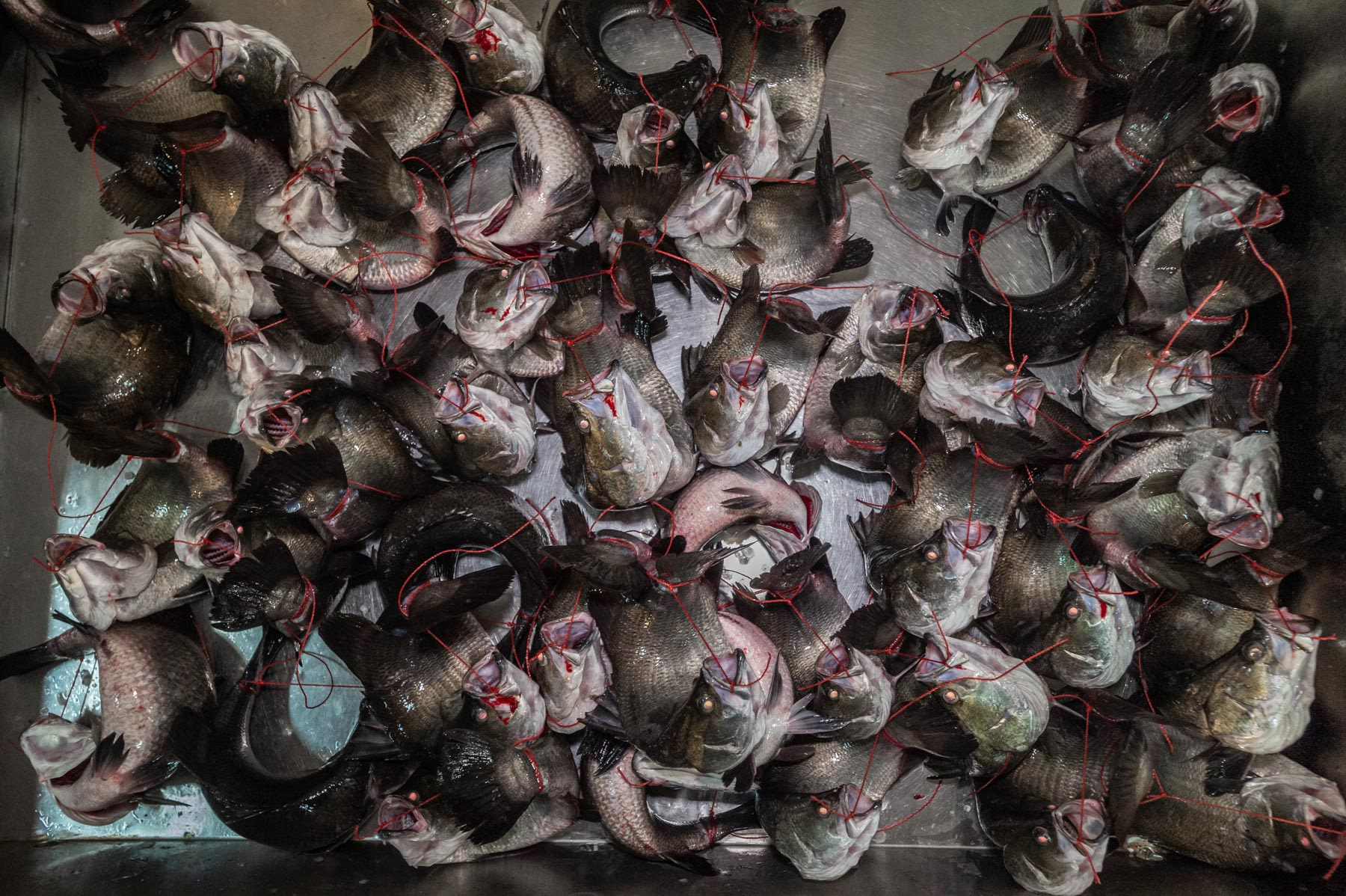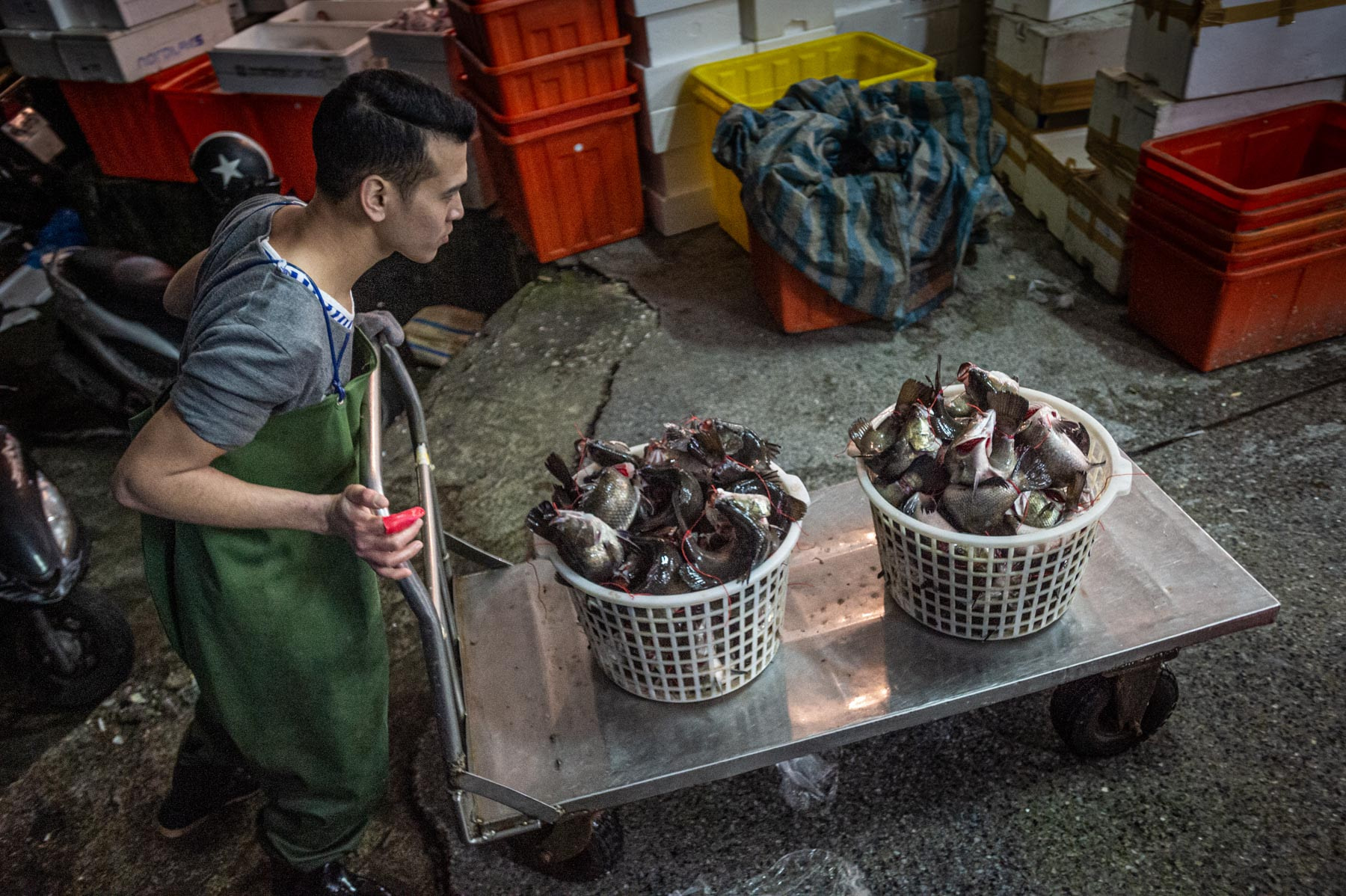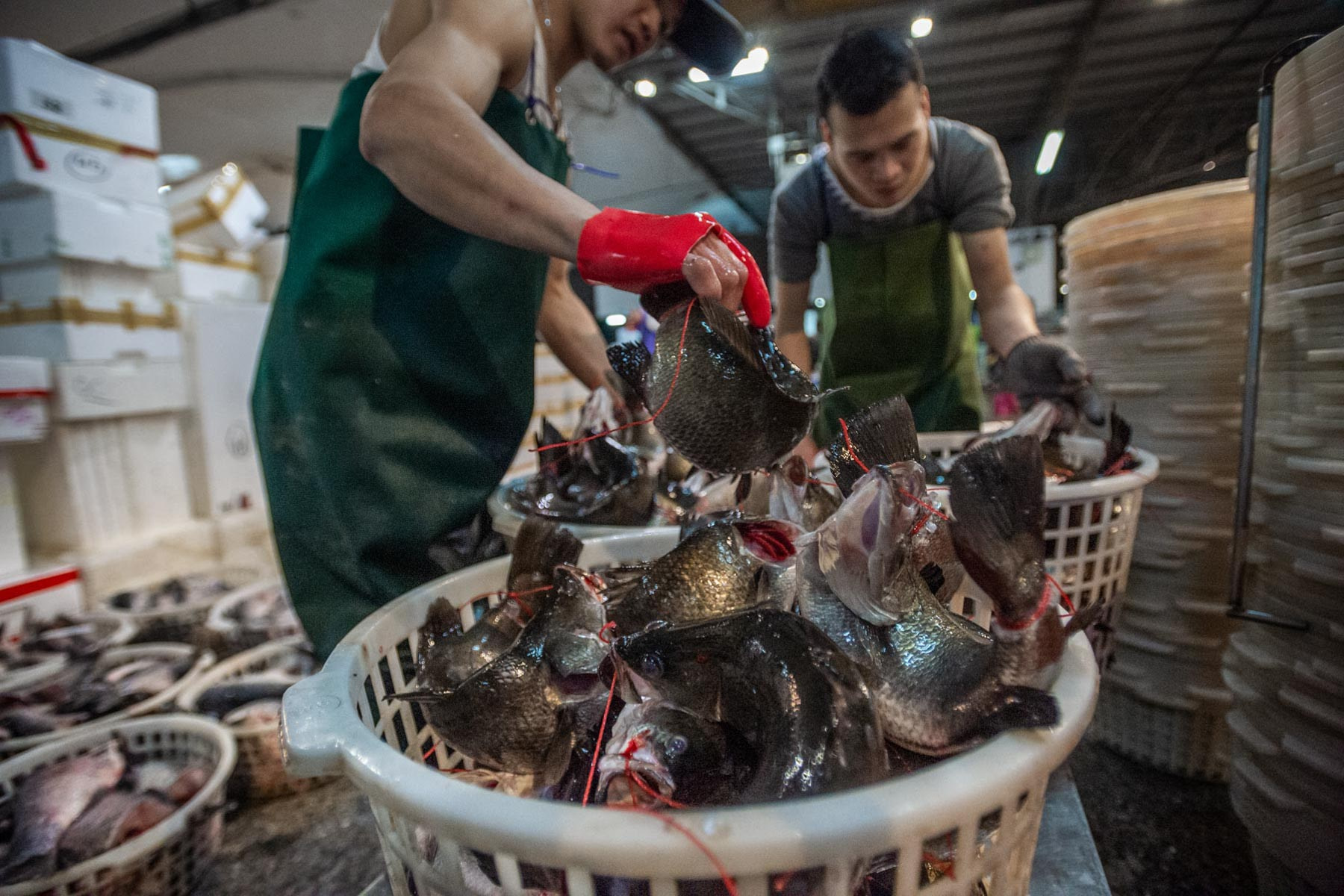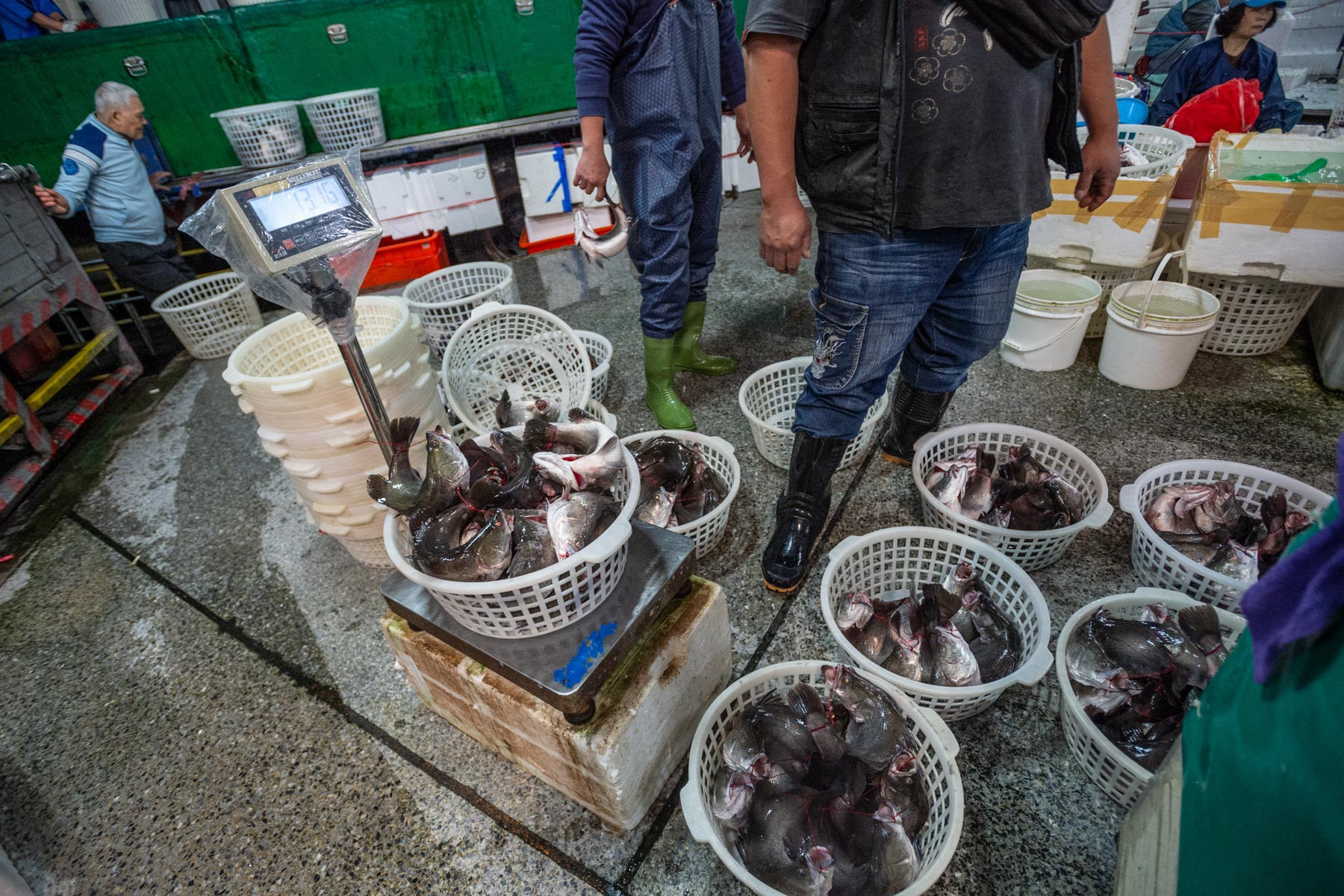Basket of bound fish at a wet market in Taiwan. Taipei, Taiwan, 2019.
Jo-Anne McArthur / We Animals
[Content warning: Contains confronting images and/or video footage]
In spite of what we now know about animal sentience, our priorities continue to lie in finding ways to maximize profit at their expense.
Before we knew anything about the inner lives, intelligence, and emotional complexities of fishes, it was difficult for us to empathize with them. Thanks to the rapidly growing field of animal behaviour studies, we’ve learned a great deal. We now know that fishes plan, use tools, curry favours, form life-long bonds, recognize faces, and experience complex emotions such as jealousy. It now goes without saying that they also experience physical pain.
While documenting the fish markets in Taipei recently, it struck me that in spite of what we now know, our priorities continue to lie in finding ways to maximize profit and not in any solemn reverence we might have for the animals’ sacrifice. I was also witnessing something I had never seen before or conceived of – fish tethering.
Tethering is devised to keep fishes alive and therefore fresh, while out of water. It prolongs their death as long as possible.
In a brief on the tethering of Sea Perch by the Taiwanese NGO Environment and Animal Society of Taiwan (EAST) in May 2019, the organization reports that:
“The total production of sea perch in 2012 was 25,524 metric tons. Since statistics for both species of perch are combined under the same category, it has so far been difficult to determine how many (individual) giant sea perch are “harvested and sold” in this way each day. Nevertheless, according to market statistics a total of 20 tons of giant perches were traded amongst fish markets in Taiwan on 22nd May, 2019. The fish sold in wet markets weigh around 0.5~0.6 kg each, meaning that approximately 40,000 giant perches were tethered for around 8 to 10 hours before their deaths on this day alone”.
A live fish is ‘tied’ or ‘bound’ for sale at a large fish market in Taipei. Taiwan, 2019.
Kelly Guerin / We Animals
Tied fish’ in a basket for sale at a large fish market in Taipei. Taiwan, 2019.
Kelly Guerin / We Animals
Fish are tethered mouth to tail. With economic movement, a plastic string is looped around the protruding bones of their open mouth. Their body is then forcibly crunched into a crescent shape, and the string is tied around the base of their tail. The red plastic slices into their delicate white flesh, and blood begins to seep from their mouth. I mention the colour of the string because it is purposefully the same colour as blood, distracting sensitive or discerning buyers from the bleeding wounds.
Tethered fish being wheeled to the sale floor at the market. Taipei, Taiwan, 2019.
Jo-Anne McArthur / We Animals
Blood drips from the mouth of a live fish who has been recently ‘tied’ at a large fish market in Taipei. Taiwan, 2019.
Kelly Guerin / We Animals
The practice of fish tethering seems to be traced back two hundred years, to the Ming Dynasty in China. Though the practice is illegal in Taiwan, there is little to no enforcement of the law protecting the welfare of fishes, and so tethering is common and visible in wet markets across the country.
Baskets of tethered fish are weighed for sale at a wet market in Taiwan. Taipei, Taiwan, 2019.
Jo-Anne McArthur / We Animals
Row of ‘tied fish’ for sale in baskets at a large fish market in Taipei. Taiwan, 2019.
Kelly Guerin / We Animals
The effort of forcing the fish into a crescent shape goes beyond their natural capacity to bend, which is why I describe the act as crunching. One cannot un-hear the sound of bones breaking during this process. Their eyes bulge further, and they are thrown by the string into baskets which are weighed for sale. Formed into these arcs ensures a prolonged death, to which the fish succumb over the course of eight to ten hours.
Investigations have shown that some tethered fish have lived up to twenty hours.
Baskets of tethered fish being weighed and sold at a market in Taiwan. Taipei, Taiwan, 2019.
Jo-Anne McArthur / We Animals
At the wet market in Taipei, thousands of fish were tethered over the course of that single night. I observed poker faced workers at this task, cigarettes dangling between lips. Fish being purchased and then carried to an exit by the string, as one would carry a purse. I wondered about the consumers. Would the fish be enjoyed, wholly or absentmindedly, or perhaps picked at by a fussy child and then swept off the plate into a rubbish bin?
Amidst the obvious suffering of the fishes and sea life that night, the market bustled with shouting, bargaining, and conviviality. It seemed the animals’ experiences were neither a consideration, nor an afterthought. In fact, we make a spectacle of their deaths: bodies artfully arranged on ice; heads hanging from hooks; red plastic string, the colour of blood.
Further reading:
Jonathan Balcombe, What a Fish Knows
Fish Feel, www.fishfeel.org
Did you know? Our stock platform offers 30,000+ photos and video clips of animal issues around the globe. Non-commercial (free) and commercial licensing available.

